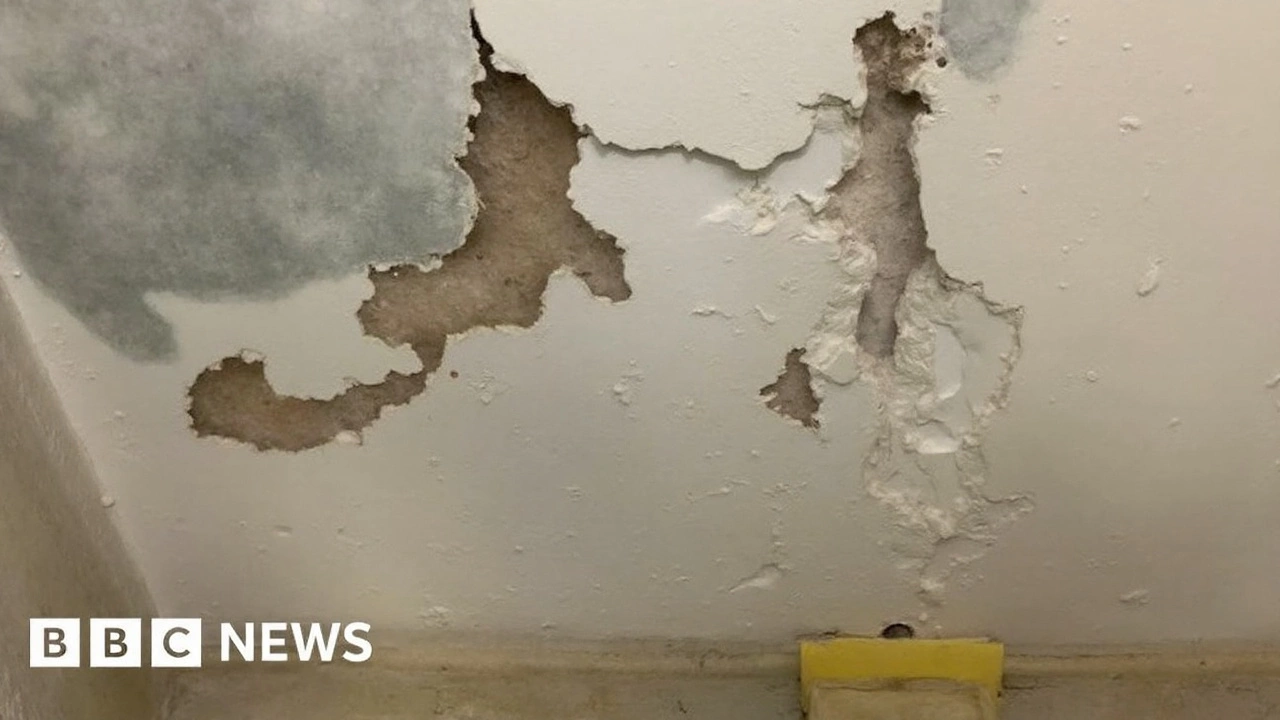Half the homes checked under the UK’s flagship insulation drive failed basic quality checks. That’s the scale of the crisis now acknowledged by ministers, who said more than 30,000 properties have been left with damp, mould and in some cases unlivable rooms after government-backed retrofits went wrong. The admission, delivered in parliament by Energy Consumer Minister Miatta Fahnbulleh, puts a harsh spotlight on how the country’s push to cut bills and carbon ended up making thousands of people sicker and poorer.
This is not one rogue contractor or a clutch of edge cases. TrustMark, the government’s standards body for energy improvements, audited 60,000 homes that received insulation since 2022. Around half weren’t properly insulated. Most of the trouble clusters around solid wall insulation — the kind normally used on older brick or stone homes — while measures managed through councils or social housing providers performed better. The worst-affected communities include lower-income areas such as Luton and County Durham, where residents describe bedrooms too damp to sleep in and walls flaking from trapped moisture.
These installations sit under two big programmes: ECO4, which launched in April 2022 to support upgrades in low-income and hard-to-heat homes, and the Great British Insulation Scheme (GBIS), which started in May 2023 to scale up basic insulation. Both carry the promise of warmer homes and lower bills while cutting emissions. Instead, tens of thousands of households now face health hazards and repair bills they never signed up for.
What the audit found
The TrustMark audit was designed to stress-test quality across a large sample of recent work. It pulled in 60,000 properties upgraded between 2022 and 2025 and looked at whether installations met required standards and were performing as intended. The headline is stark: roughly one in two failed to meet the mark. That translates to more than 30,000 households living with installations that are substandard or, in some cases, hazardous.
Patterns emerged. Solid wall insulation was flagged far more often than other measures. That’s important because solid-walled homes — common in pre-1920s terraces and cottages — behave very differently from modern cavity-wall buildings. If installers don’t assess moisture, ventilation and the building’s “breathability” before adding insulation, water can get trapped, the wall can’t dry out, and mould and decay follow. In short: the wrong system, poor detailing, or a rushed job can make a home colder, wetter and unhealthy.
Compliance rates were notably better where local authorities or social landlords controlled delivery. Those projects tend to use tighter procurement rules, independent checks and consistent contractors. By contrast, homeowner-led jobs often rely on long subcontracting chains and payment models that reward speed over careful surveying and aftercare.
The result on the ground is miserable. In Luton, residents report black mould blooming where newly insulated walls meet cold surfaces and around blocked air bricks. In County Durham, families speak of plaster crumbling within months and a lingering damp smell that won’t shift. Across dozens of similar cases, people now heat rooms they can’t sleep in and spend on dehumidifiers instead of saving on energy bills.
The health impact is the hardest to ignore. Damp and mould are linked to asthma flare-ups, respiratory infections and allergies, hitting children, older people and those with existing conditions first. GPs see it. Parents see it. The promised “warmer, cheaper” homes have, for many, turned into an avoidable health risk.
How did so many jobs go wrong, so fast? Three systemic issues keep coming up:
- Rushed rollouts and perverse incentives: When programmes set aggressive targets and pay by the measure, the market prioritises volume. Survey time shrinks, detailing suffers, and ventilation gets sidelined.
- Fragmented supply chains: Prime contractors often subcontract to small installers, who then subcontract again. Lines of responsibility blur. The person doing the work may never have met the assessor who scoped the job.
- Skills gaps: Solid wall insulation is complex. Britain doesn’t have enough trained retrofit coordinators, damp specialists and installers to do thousands of tricky projects at speed. Training is expanding, but not fast enough.
How it went wrong—and what happens next
The UK has standards meant to stop exactly this. Retrofit jobs are supposed to follow a whole-house approach — not just “slap on insulation and go” — with plans that factor in ventilation, moisture, and how heat moves through the building. In practice, that approach has been uneven. Installers can pass paperwork checks yet still leave cold bridges at window reveals, cap off air bricks, or skip proper condensate drainage — details that sound minor but trigger major moisture problems once the house is sealed up.
Solid walls are especially unforgiving. External wall insulation (EWI) needs careful fixing, correct insulation thickness, a continuous thermal layer and watertight render. Internal wall insulation (IWI) demands even more caution: a vapour control layer correctly lapped and taped, no gaps behind boards, and a plan for tricky junctions like chimney breasts and party walls. Miss the detailing and you shift the dew point into the wall, where water condenses out of sight until it shows up as black mould in corners and behind furniture.
The audit’s regional pattern also tells a story. Lower-income areas were hit hard because that’s where the schemes rightly targeted support. But it’s also where older housing stock and cold, wet winters combine with fragile household budgets. People can’t afford to “heat through” a soggy wall, so the moisture never drives off, and the cycle deepens.
Oversight is now the burning question. TrustMark’s name sits on the audit, but responsibility stretches across the chain: assessors who scoped the wrong measure, coordinators who okayed designs, installers who cut corners, and big contractors who pocketed fees. Ministers have accepted the scale of failure. What they haven’t yet set out — and what affected families are demanding — is a timetable for putting homes right and a clear answer on who pays.
For many households, a proper fix will not be cheap. Correcting bad solid wall insulation can mean stripping failed systems, drying out the substrate, repairing render or brickwork and reinstating ventilation. Where internal systems failed, it might mean taking rooms back to the bare wall. You’re not talking about cosmetic touch-ups. You’re talking about months of disruption and costs that often run into five figures.
There are supposed to be safety nets. Many installations come with guarantees from recognised bodies and workmanship warranties tied to the installer. But paperwork is patchy, and companies fold. Some homeowners don’t even have a full pack of installation photos, product certificates and commissioning records. Without that, proving defects becomes a grinding process.
Campaigners want three things, fast: a funded national remediation programme; automatic access to independent surveys for affected households; and a single point of accountability so people don’t bounce between installers, main contractors and scheme administrators. They also want better safeguards — retention payments held back until winter performance is proven, mandatory post-occupancy checks and a cap on subcontracting tiers.
This isn’t the first time the UK has tripped on retrofit. The Green Deal left scars, and the Green Homes Grant collapsed under the weight of admin and delivery problems. The lesson is the same: when quality control lags behind targets, the public loses faith and the market suffers whiplash — boom, bust, then a long rebuild of trust.
Beyond the policy wrangling, households need immediate, practical help. If you’re living with damp and mould after a recent insulation job, here’s how to get your case moving:
- Gather evidence: Take dated photos of affected areas over time. Keep humidity and temperature notes if you can.
- Find your paperwork: Installer details, the system used, guarantees and any handover documents. If you don’t have them, request copies from the installer and the main contractor.
- Report defects in writing: Notify the installer first, then escalate to the scheme administrator and TrustMark if you get no response.
- Ask for an independent survey: A survey by a qualified retrofit coordinator or building pathologist can pinpoint the cause and the remedy.
- Use local support: Environmental health teams can assess hazards under housing standards. Your GP can also document health impacts.
- Log extra costs: Dehumidifiers, medical expenses, lost rooms — keep receipts and notes for any compensation claim.
What about the bigger picture? The UK cannot hit its climate targets or cut energy bills at scale without fixing leaky homes. That means insulation — done well. It also means ventilation. Mechanical ventilation with heat recovery, or at least demand-controlled fans, should be part of the toolkit when we seal up buildings. And it means trained people, not just products: retrofit coordinators who own the design risks, installers who do the tricky detailing, and supervisors who sign off the work in person, not just on a screen.
There’s also the market design. Paying for outputs — “X homes insulated” — doesn’t guarantee outcomes like lower bills or healthier rooms. A smarter model would pay in stages: survey, install, post-works checks, and then a seasonal performance verification. Hold back a portion until a property gets through its first winter without damp or mould. That flips incentives toward durability, not speed.
The supply chain needs breathing room. You can’t conjure thousands of skilled workers overnight. Training pipelines for solid wall insulation, ventilation commissioning and moisture control should be funded alongside any expansion of grants. Contracts should reward firms that invest in apprenticeships and retain staff rather than chasing the cheapest subcontractor each quarter.
For now, the political pressure is squarely on ministers. The admission of a systemic failure raises obvious questions: Will the government underwrite fixes where installers have gone bust? How quickly will independent inspectors get through the backlog? What’s the deadline for putting every failed home right? And will the next phase of schemes lock in design accountability so the same mistakes aren’t repeated?
There are workable policy levers. A national remediation taskforce with published weekly progress; ringfenced funds to cover orphaned cases; mandatory ventilation upgrades where insulation increases airtightness; a ban on multi-tier subcontracting for complex measures; and retention bonds that sit with an independent escrow until post-occupancy checks pass. None of this is exotic. It’s construction 101 scaled up for retrofit.
One reason this story cut through is that the victims did exactly what they were told. They opened their doors to a government-backed upgrade to save on bills and help the planet. They didn’t choose a risky technology. They chose insulation — the most basic energy fix there is. When that goes wrong, trust evaporates not just in one programme but across the whole net zero project.
The energy system is already in flux, from heat pumps to grid upgrades. Getting the fabric of homes right is the foundation for all of it. The current insulation scandal shows what happens when we ignore the basics: survey properly, install carefully, ventilate well, and check the work in winter, not just on the day it’s finished.
In the weeks ahead, look for three signals. First, a clear remediation timetable with milestones the public can track. Second, a funding package that doesn’t leave families begging for help. Third, hard guardrails for the next wave of retrofits: independent inspections, published pass/fail rates by contractor, and consequences when jobs don’t meet standards. Without those, confidence won’t recover, and neither will the homes that were supposed to be made safe, warm and affordable to heat.
Back in Luton and County Durham, people aren’t waiting for policy papers. They’re bleaching walls, running dehumidifiers and sleeping in spare rooms. They’re watching energy bills rise while rooms sit unused. They’re dealing with coughs and condensation and crumbling plaster. The fix is not optional. It’s urgent.
Ministers have acknowledged the mess. The next move is on them — to make families whole, to rebuild the market on solid ground, and to prove that insulating Britain’s homes can still be the cheapest, cleanest climate policy we have when it’s done with care, not speed.





